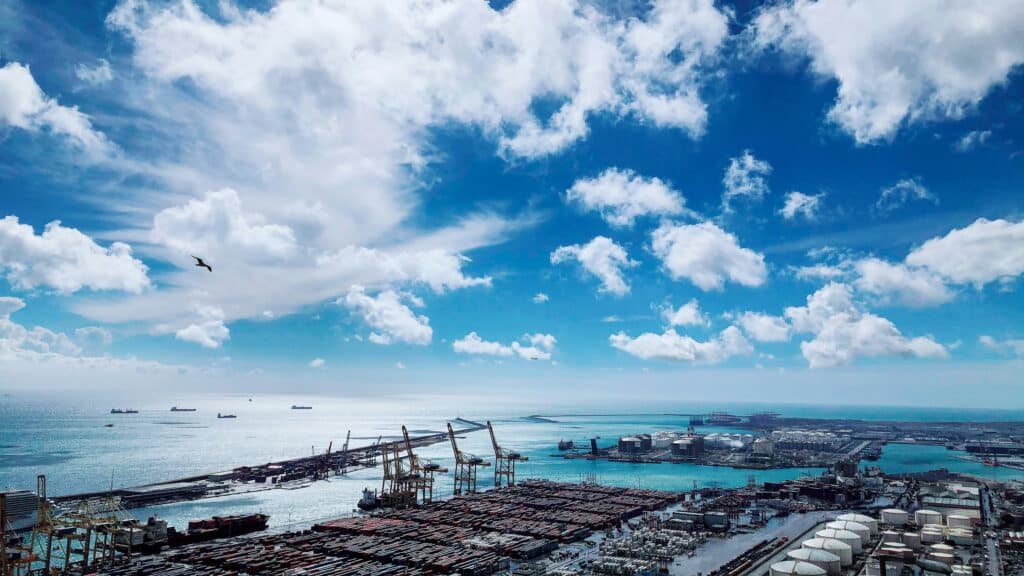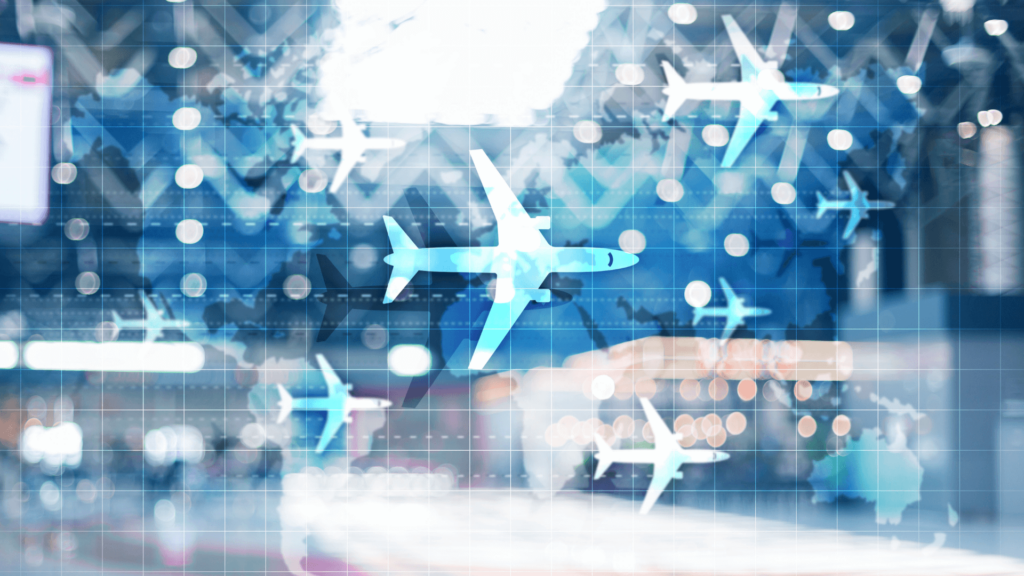Is the EU putting enough effort in supporting transport as backbone of the EU internal market?
This is the third and final episode of the short series: Transport as a Catalyst for the EU Single Market
I made my first steps into the Brussels ‘EU bubble’ as a young professional at the beginning of the nineties just before the start of the internal market in 1993. For a long time, I had on my desk a white and red border crossing barrier symbol that had been given as a souvenir to promote the start of the single market. I remember the start of the internal market as a big thing, and so it was: the free movement of people, services, goods and capital became a reality in 1993 that could not have been imagined decades before. Thirty years later, one can easily say that, more than a common market and/or a basis for having harmonised rules on products and services, it has become a more political and commonly driven space for free circulation in a much broader sense of the word. Students circulate and spread their study years in different countries, the euro gave this internal market a further boost and the ongoing enlargement of the Union has been an ultimate sign that this European internal market has become an attractive concept and the European Union a group that people want to be part of. However, lately I see some cracks in the ceiling of this ambitious project that started under the leadership of Jacques Delors.
But before coming to this point, I would like to share my views on the role of transport and in particular ports as catalysts of the internal market. I would even like to make it stronger: transport and ports have been and are making the internal market happen.
Ports connect people, economies and cultures. Ports are hubs in the transport network, linking maritime transport with the hinterland and linking islands and overseas areas with the European mainland. Ports are often the places where goods are prepared for commercialisation and distribution all over Europe. In addition, they are the places where tourists embark and disembark on cruise journeys to discover Europe’s history, treasures and heritage, which are – noblesse oblige – often situated near Europe’s ports, since cities were built near the water. Increasingly, ports are also essential pillars in the supply of energy, including new and renewable energy sources, and are entry points to distribute the energy that Europe’s economy and society need all over the Union.
Realising that Europe’s transport infrastructure can be seen as the backbone of the internal market, in recent decades the Commission has put much effort into designing the Trans-European Transport Network (TEN-T), consisting of road, rail and inland waterway connections and motorways of the sea, and since 2013 identifying the main nodes: seaports, inland ports, airports and major cities.
The development of this network has gained in importance over the years and the decision to identify a core layer and a more supportive comprehensive layer, each with strict requirements, should be seen as a fundamental step in the achievement of a real internal market accessible by everyone. Transport is a network industry and as long as each country only takes care of its own infrastructure and does not realise that its lifelines do not end at the national borders, the internal market is not happening. Likewise, different countries and regions in Europe are dependent on a port in another country for the supply and export of their goods, and connectivity or a lack of good connectivity with this port will make or break the growth potential of the region or country. Let me be clear, we are not only speaking about the few landlocked countries in Europe. While the TEN-T policy has recently been strengthened and reinforced with the very recent review of the guidelines, there is still much to be done to reach the deadline of 2030 for completing the core TEN-T network.
However, as I said in the introduction, I believe that this ambitious internal market project that started in the 80s and 90s is under pressure and at risk. For me, the first event that probably put a spoke in the wheel of the common market was Brexit. Even though there has been much solidarity among the EU member states sticking together on how to deal with the UK in the aftermath of its decision to leave the EU, the loss of this big nation has indirectly put some hesitation and doubt in the big European project. Even though other governments have seen how difficult it is to pull out and what the consequences are, many political movements have taken this opportunity to play the eurosceptical card. A second important thing that happened came from outside the EU. China, mainly with its Belt and Road Initiative, has been trying to play the rich uncle to some countries which were in difficulty by offering help with the development of big infrastructure projects – projects that are maybe not directly in the interest of the EU and the support is given without being so strict about the conditions established in Europe’s TEN-T policy. Not realising that there is no such thing as a free lunch, some governments have been more tempted than others to accept these offers. While these events that maybe somehow destabilise or at least temper enthusiasm for the internal market for transport can be seen as somewhat external, in recent years cracks in the internal market have been caused – be it unintentionally – from inside.
In the aftermath of the Covid crisis, the Commission set up its EU recovery plan and created the Recovery and Resilience Fund with the good intention to help the member states impacted by this unprecedented health crisis. The result, however, was that the recovery money was distributed among the member states unequally. Not only the size of the national envelopes but also the way the money was spent greatly differs. It seems that “making your economy and society more sustainable, resilient and prepared for the green and digital transition” was interpreted very differently by each member state and not many considered that transport, let alone ports, are instrumental in reaching these objectives. Where money was given to ports it served very diverse needs and very much increased the gap between ports which can benefit from recovery money and those which cannot.
A second internal – unintentional – possible damage to the internal market could be created by so-called ‘matching aid,’ which has been allowed in reaction to the US Inflation Reduction Act. Companies that can receive a certain amount of aid from the Americans can knock on the door of one of the member states, which on the basis of this new EU concept of ‘matching state aid’ is entitled to give a comparable amount of aid, even if the aid is given to a specific company. It is clear that such state aid can lead to state aid shopping and will undermine the level playing field between countries. Companies might prefer to situate themselves in a port or the hinterland of a port in a country where state aid is being given.
The common transport policy, and therefore the internal market, risks being undermined by another EU reform. The Commission is currently preparing a reform of the EU budget. Under the heading a “reinforced budget,” in which “policies will prevail over programmes,” the Commission is thinking of re-nationalising certain parts of the budget and providing every member state with a national envelope based on a single plan. What will this mean for transport and therefore the internal market? Apart from the big cross-border transport projects, member states would be able to finance their transport projects as part of their national single plan. However, this national single plan would also serve to finance agriculture, migration, poverty, etc… . From a transport infrastructure perspective, this approach could take us back to the regional policy of the nineties, in which EU money first serves national projects and priorities, and will undermine the whole transport network and internal market concept that Europe has been working on in recent decades. While it seems that big cross-border projects would remain under European central management, such a reform completely disregards what I explained before about the transport network. A minor missing link or problem in the network in one country can be detrimental for another country. How many governments will prioritise a missing link in their country if it essentially serves another country? Will the call from Mr Draghi to think more about the common interest when planning transport be enough to convince a country not to concentrate on its own priorities? Moreover, since the national envelope will only be released if the required reform agenda for the country has been realised, transport and especially ports risk being taken hostage, because their country is not realising the necessary reforms in another field – something on which the port has no grip at all. These reform plans are putting the completion of TEN-T at risk and would jeopardise the internal market.
Last but not least, I regret to note that various member states are introducing border controls and so reintroducing the barriers that were lifted 30 years ago. Strengthening Europe’s resilience should be done by sticking together and giving new impetus to the internal market, not by reinstalling borders or by bringing the development and the upgrading of transport infrastructure back to being the main responsibility and choice of the individual member states.
After decades of globalisation and cooperation, after many years of lifting barriers, we have entered an era of geopolitical and geo-economic turbulence. At the same time, Europe is part of the international race towards net-zero. We can only achieve this if we further strengthen the internal market and if all policies and all fields of the economy and society realise that without well-functioning sustainable, efficient and resilient European transport, without ports, we cannot achieve the ambitions Europe is striving to achieve.




